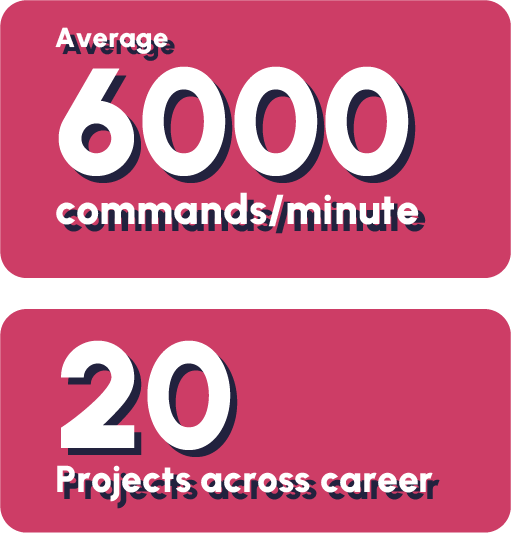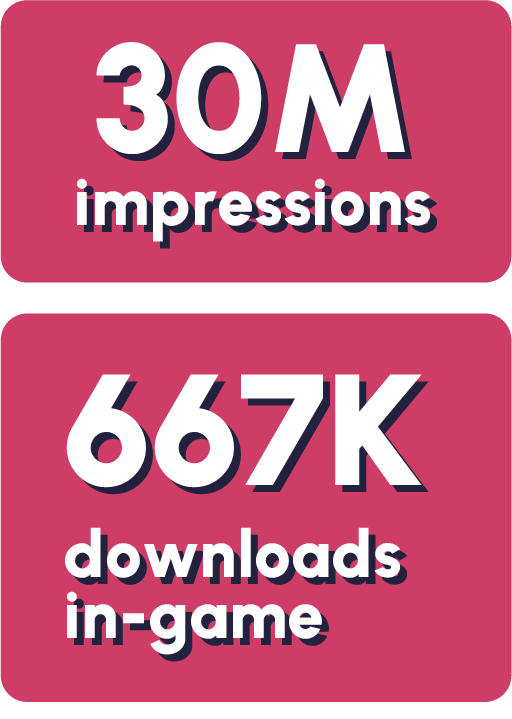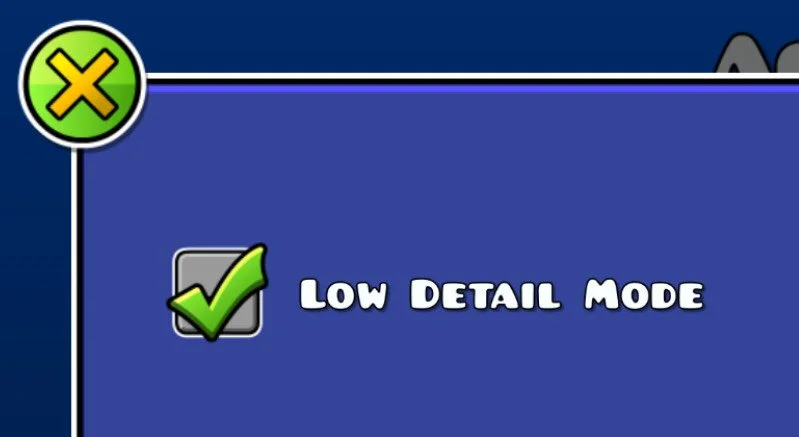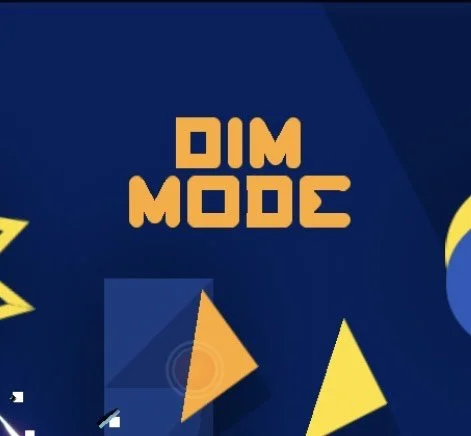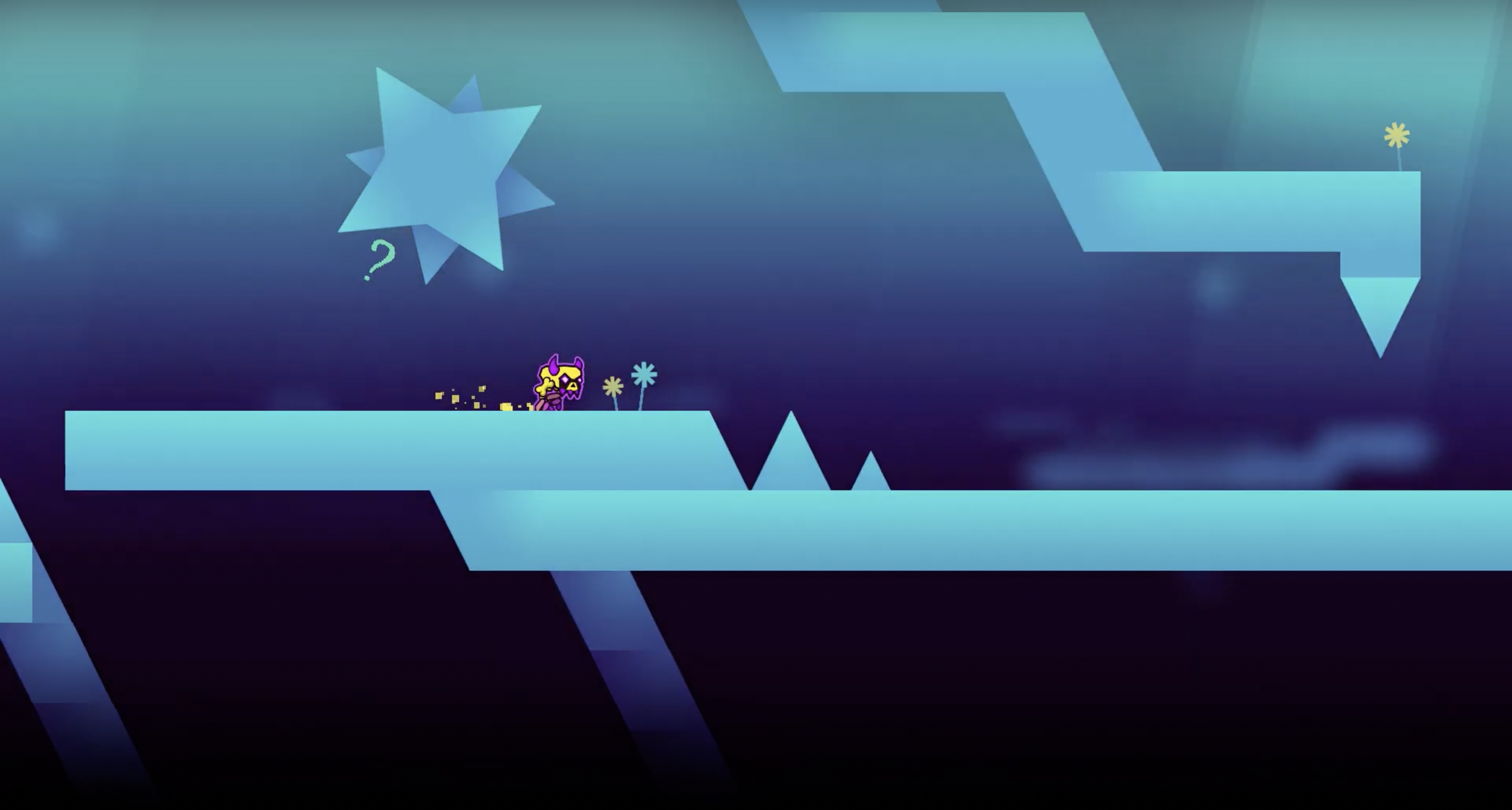Geometry Dash
Introduction:
Geometry Dash is a rhythm-based platformer video game where players navigate auto-scrolling levels synced to music. While the game includes 22 developer-made levels, its real depth comes from its community-driven level editor, with 110+ million user-created levels in the last 12 years.
Geometry Dash’s tools offer a unique, open-ended canvas where creators design not just gameplay but interactive visual experiences. With precise control over movement, timing, and animation, levels function like synchronized music videos—playable, reactive, and often challenging.
A screenshot of a section of my level, “RUST,” in the editor. The small numbered circles are all commands, using visual coding to manipulate groups of objects with alpha, hue, movement, etc. My levels average ~6,000 commands/minute.
As the editor evolved, so did the community. Users pushed the creative limits, developing new techniques to make dynamic visuals, abstract storytelling, and intricate gameplay. This culture of experimentation transformed level creation into an art form, with the best levels demanding immense technical skill, aesthetic precision, and deep understanding of player psychology.
Involvement:
Nine years ago, I opened the Geometry Dash editor out of curiosity, unaware that it would evolve into a career. Within two years, my levels were being featured on the game’s main page, marking my first major recognition. With each project, I pushed myself to elevate the experience—not just refining gameplay, but blending colors, motion, form, and music to move the user. This drive led me to develop a unique style—dynamic, visually striking, and immersive—one that became an inspiration in the community.
A screenshot of my level, “Acu,” on the Featured Page.
Across my 20 full-length projects, in-game downloads, views, and impressions on social media total at 700 million.
In this case study, I will speak to three of my most significant projects in terms of effort, personal accomplishment, versatility, and passion.
Roles:
Level Designer
Creative Director
Sound Designer
Community Influencer
Project Manager
Collaboration Coordinator
Game Mechanics Specialist
UX Designer
Marketing/PR Manager
Streamer
Artistic Moderator
Community Representative
“RUST”
My Largest Production. ***FLASHING LIGHT WARNING***
Recording courtesy of YouTube account Viprin.
This level, "RUST," is my largest scale production to date. I had 31 people playtesting the level throughout the creation process, all giving extensive feedback, a group that helped me with feedback on the visuals, and a group of social media influencers that gave the project exposure in exchange for early access and therefore more exclusive content for their audiences.
This level was made to be as intimidating as possible, so I took an approach with the visuals in tandem with the music to make the level feel like an abandoned industrial machine that comes to life as the player goes through it. I reduced the frame rate of many animations to make the motion punchier, I included a lot of subtle flickering colors and movement to build tension and make everything feel alive, even using some assets within the game at extremely low opacities, moving them rapidly to random positions on the screen to give the appearance of a texture.
I limited most of the level to have two colors on-screen at a time (excluding black) to help the player notice the smaller subtle details scattered throughout, increase cohesion, and provide a larger challenge to myself. This project took 10 months and about 250 hours to create.
“Acu”
My Most Popular Level. ***FLASHING LIGHT WARNING***
Recording courtesy of YouTube account Nexus.
"Acu" is my most popular level, made nearly 5 years ago. The game's UGC thrives in part because of how high the difficulty of levels is pushed—levels are given a difficulty rating, and the highest difficulty is called "extreme demon," which takes most players one or several years of playing the game to be able to beat. At that difficulty, just about everyone who created one tried to make it the hardest level of all time, and as a result the playability went down considerably. The popularity of this level is because I made the easiest, most approachable, most accessible extreme demon. It was specially designed with options to lower processing time, reduce brightness of colors, and practice aids for players. It was for all the players that were trying to beat their first extreme demon, which was a massive, undervalued portion of the community.
“Acu” features several toggle-able accessibility options, reducing lag, brightness, and more.
Downloads in-game are limited to one per user that has purchased the game, so this level’s 5.1 million downloads says volumes. Most players take around 15,000 attempts to beat a level of this difficulty, resulting in potentially billions of attempts accrued in the playerbase.
This level helped me significantly, it put my name on the map in the community, which allowed me in turn to focus my efforts to larger, riskier productions. The level itself is also quite colorful, which was unique for extreme demons at the time, helping my style become a point of inspiration for many creators.
“Acu” gained popularity in part because of the striking visual style, using contrast in color in place of fine detail.
“so”
My Passion Project. ***FLASHING LIGHT WARNING***
Recording courtesy of YouTube account Viprin.
This level is my most recent full project, meaning one that I have taken a considerable amount of time to make. This is my favorite project in both the process and execution, as I had a very abstract theme that lent itself well to experimentation and development of my style. Compare this to a level of mine like "Acu," and you can see that this level has darker colors and more contrast.
“So” features more value contrast, creating a more dramatic atmosphere.
I find that I work best with atmospheric music like this because it lets me reinforce every detail of the music for the player. For example, take a flute sound in the background that the player may not notice—I add a little visual representation of that sound. This prompts the player to go back and listen closer to the music to find the connection. This improves replayability, cohesion, and appreciation of the song through a visual medium. I find when the song and level are deeply connected, you get the most focused vision and atmosphere.
The title itself, "so," was picked because of one of the definitions of the word, meaning "to the same extent" for comparisons. The level has balanced dark and light colors, balanced details in focus and blurred (using radial gradients copied and pasted in straight lines). "So" was also picked because I felt so strongly about it, as I worked on the level for close to 2 years and 350 hours.


